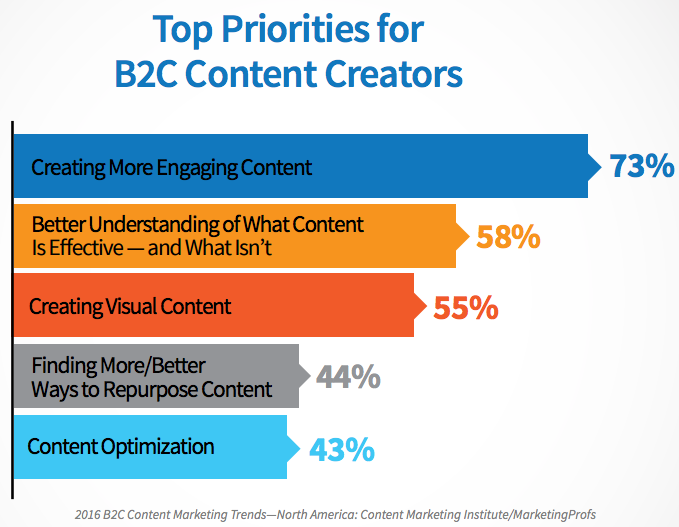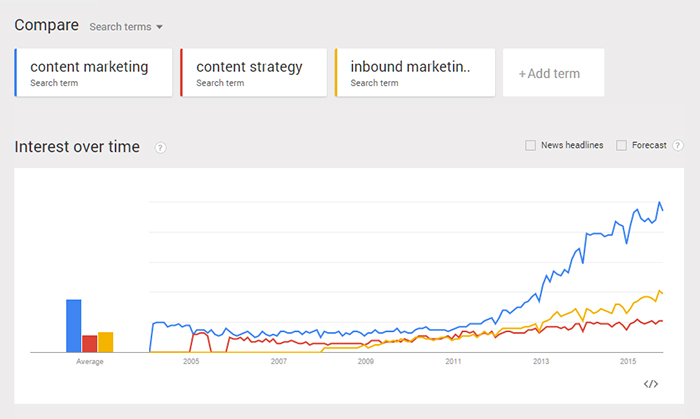Competition in marketing online content is getting tougher each year. Surveys are showing that 70% of marketers are creating more content in 2017 than they did last year. This is a great time to develop a good content strategy if you are new to content marketing or to just revisit your old strategy if you’ve been using it for a while. Staying innovative and up-to-date is more important than ever.
To ensure that you are one step ahead of the competition, a smart and rock solid content marketing plan that you can execute step by step is essential.
In a nutshell, content marketing is a marketing program that focuses on creating and publishing content and is aimed at your target audience. The audience is usually online and the main goal is to attract new customers. The main elements of content marketing are blogs, social networks, and content assets like eBooks, tools, and webinars.
Why Your Business Needs A Content Strategy?
Content marketing might seem like a lot of work for someone when compared to other marketing methods that provide faster gratification like Pay-per-click (PPC). In a lot of cases, content marketing is used when a company finds that those other methods are ineffective or expensive. For example, imagine you are using PPC as a main marketing method to generate leads for your business. Let’s say that you get 500 new leads each month for $5,000 ad spend. This might be fine but then you are stuck paying that much money every single month if you want to keep the leads coming in.
You can compare this to blogging and content marketing where you make the post and then link to your product or service from that article. Visitors will come in and become a lead at, let’s say, 2% conversion rate. That means if 100 visitors read that post, you would get 2 leads out of it. The great thing about content marketing is that your job is done now. That same blog post can continue to generate leads year after year.
Now you can see how content marketing sets your business up for consistent and cost-effective traffic that doesn’t require any attention or money to keep it going. You don’t want to completely stop all your other marketing activities and just switch to content marketing cold turkey, however. Content marketing should complement your overall marketing strategy and everything should work together.
What is a Content Strategy?
Content strategy is the main piece of your marketing plan and it is basically the management of everything that you create. Content creation is one of the key pieces of content strategy but it needs to be well-planned and also executed the right way. Here are some of the things that you should take into the account when developing a content strategy:
- The kind of formats you’ll be using
- What problem are you going to solve
- Who is your target audience
- Where will you publish your content
- When will you post your content
A good content strategy will help your business prepare and plan for a cost-effective and reliable source of traffic that will generate new leads over time. Content marketing is so cheap and effective because you can create a single piece of content that is linked to your product or service and it will continue to generate leads for your business as time goes on.
While this is happening you can experiment with other marketing strategies like PPC, social media, and sponsored content. Not only will your content attract potential leads and customers, but it will also educate and nurture future prospects which is an important piece of the puzzle. Good content will generate awareness of your brand, educate your prospects and solve their problems. This will, in turn, increase the possibility they will become potential customers. Having found the content they now trust you and see you as an authority in the industry. It’s all about moving leads through a funnel in stages, the end of which is to have a recurring customer. A good piece of content will make entry into your funnel as efficient as possible.








